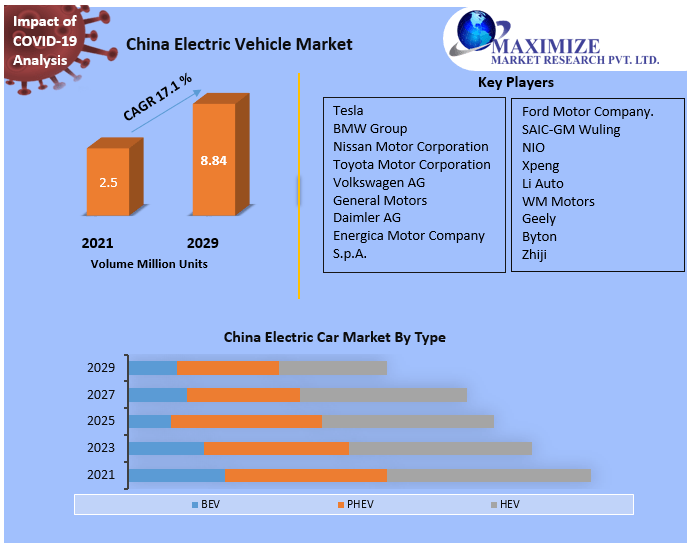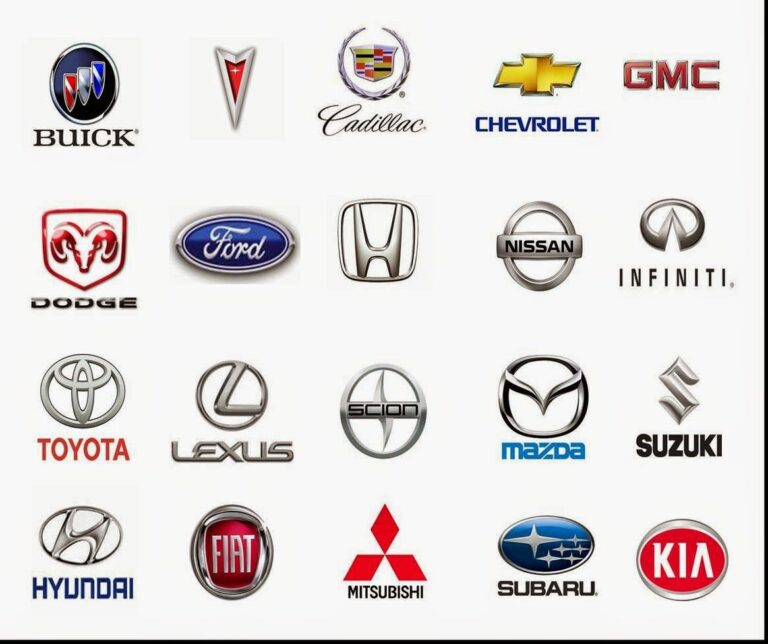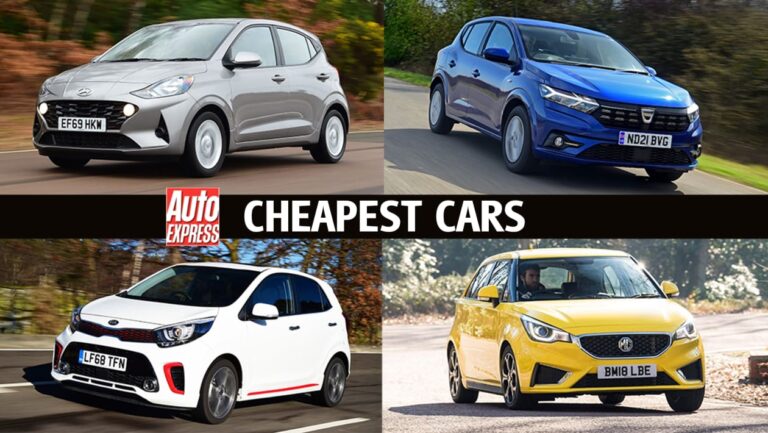Electric Car Brands 2020: A Comprehensive Guide to the Dawn of a New Automotive Era
Electric Car Brands 2020: A Comprehensive Guide to the Dawn of a New Automotive Era cars.truckstrend.com
The year 2020 stands as a significant landmark in the automotive industry, marking a pivotal acceleration in the adoption and development of electric vehicles (EVs). Far from being a niche market, 2020 saw a burgeoning landscape of electric car brands, offering consumers an increasingly diverse array of choices that challenged traditional perceptions of range, performance, and accessibility. This comprehensive guide delves into the Electric Car Brands of 2020, exploring the key players, their offerings, the technological advancements, and the critical considerations for anyone looking to embrace the electric revolution during this transformative year.
The importance of 2020 in the EV narrative cannot be overstated. It was a year when regulatory pressures, growing environmental consciousness, and leaps in battery technology converged, pushing both established automotive giants and ambitious newcomers to roll out compelling electric models. From luxury sedans to practical crossovers, the market began to mature, signaling that EVs were no longer just a futuristic concept but a viable, everyday alternative to gasoline-powered cars. Understanding the brands and models available in 2020 is crucial for appreciating the foundation upon which today’s rapidly expanding EV market is built.
Electric Car Brands 2020: A Comprehensive Guide to the Dawn of a New Automotive Era
The Evolving Landscape of Electric Vehicles in 2020
By 2020, the electric vehicle market was no longer solely dominated by a single pioneering brand. While Tesla continued to hold a significant lead, traditional automakers had begun to pour substantial resources into their EV divisions, recognizing the inevitable shift. This period saw increased investment in dedicated EV platforms, battery research, and charging infrastructure development. Consumer awareness was also on the rise, driven by improving vehicle ranges, the promise of lower running costs, and growing environmental concerns. Governments worldwide continued to implement incentives, such as tax credits and rebates, further stimulating demand and making EVs a more attractive proposition.
Established Leaders: Tesla and Beyond
In 2020, Tesla remained the undisputed market leader, not just in sales volume but also in setting industry benchmarks for range, performance, and charging infrastructure (with its proprietary Supercharger network). The Tesla Model 3 was a breakout success, becoming one of the best-selling EVs globally, lauded for its performance, minimalist interior, and advanced software features. The Model S and Model X continued to define the premium EV segment, offering long ranges and blistering acceleration. Crucially, 2020 saw the initial deliveries of the Tesla Model Y, a compact SUV based on the Model 3 platform, which was poised to capture an even larger share of the crossover-hungry market.
Beyond Tesla, several legacy automakers were making significant strides:
- Nissan: The Nissan Leaf continued to be a staple in the affordable EV market, offering practical range and a proven track record. While not as flashy as some competitors, its reliability and accessible price point made it a popular choice.
- Chevrolet: The Chevrolet Bolt EV stood out for its impressive range-to-price ratio, offering over 250 miles of range in a compact, versatile package. It was a strong contender for those seeking an all-electric daily driver without breaking the bank.
- Audi: Audi’s entry into the luxury EV SUV segment, the Audi e-tron, offered a premium experience with a focus on refined comfort, advanced technology, and quattro all-wheel drive. While its range wasn’t class-leading, its build quality and sophisticated driving dynamics appealed to luxury buyers.
- Porsche: The Porsche Taycan made a dramatic entrance, proving that an EV could deliver true sports car performance. With blistering acceleration, exceptional handling, and rapid charging capabilities, the Taycan redefined what was possible for electric performance vehicles.
- BMW: The quirky yet innovative BMW i3 continued to be a unique offering, particularly popular in urban environments for its compact size, sustainable materials, and optional range extender.

Emerging Contenders and Niche Players

The year 2020 also highlighted the rise of new players and the diversification of offerings from existing brands:
- Hyundai and Kia: These Korean automakers emerged as strong value propositions. The Hyundai Kona Electric and Kia Niro EV shared a common platform, offering impressive ranges (often exceeding 250 miles) and a wealth of standard features at competitive prices. Their success demonstrated that long-range EVs could be affordable and practical for the mass market.
- Polestar: As a performance EV brand spun off from Volvo, Polestar introduced the Polestar 2. This stylish fastback sedan aimed directly at the Tesla Model 3, offering a unique Scandinavian design, Google Android Automotive OS integration, and strong performance credentials.
- Rivian: While not yet delivering vehicles in significant numbers in 2020, Rivian generated immense buzz with its R1T electric pickup truck and R1S SUV. Positioned as an "adventure vehicle" brand, Rivian showcased the potential for electric power in less traditional segments, promising impressive off-road capabilities and innovative features.
- Lucid Motors: Another highly anticipated startup, Lucid Motors, was gearing up to launch its luxury Lucid Air sedan. Though production was still some time away, its promise of ultra-long ranges and groundbreaking efficiency created excitement among enthusiasts and investors.

Key Considerations When Buying an EV in 2020
For consumers in 2020, making the switch to an EV involved several important considerations:
- Range: This was arguably the most critical factor. While ranges were improving, "range anxiety" (the fear of running out of charge) was still a common concern. Buyers had to assess their daily driving needs and consider models offering sufficient range for their lifestyle. Models with 200+ miles were becoming the new standard.
- Charging Infrastructure: The availability of charging stations, both public and at home, was vital. While Tesla’s Supercharger network was robust, other brands relied on growing third-party networks (Electrify America, ChargePoint, EVgo). Home charging (Level 2) was essential for daily convenience.
- Battery Technology and Warranty: Understanding the battery’s chemistry (e.g., NMC, LFP), its degradation over time, and the manufacturer’s warranty (typically 8 years/100,000 miles) was crucial for long-term ownership confidence.
- Performance and Driving Dynamics: EVs offered instant torque and smooth, quiet operation. Performance varied widely, from the exhilarating acceleration of a Taycan to the more sedate but perfectly adequate power of a Leaf.
- Cost: While the upfront purchase price of EVs was often higher than comparable ICE vehicles, government incentives, lower fuel costs (electricity vs. gasoline), and reduced maintenance expenses contributed to a lower total cost of ownership over time.
- Government Incentives: Various federal, state, and local incentives (tax credits, rebates, HOV lane access) could significantly reduce the effective purchase price of an EV, making them more competitive.
Challenges and Solutions in the 2020 EV Market
Despite rapid progress, the EV market in 2020 still faced certain challenges:
- Upfront Cost: The higher initial purchase price compared to gasoline cars remained a barrier for some consumers.
- Solution: Government incentives and the increasing availability of more affordable models (like the Bolt EV, Kona Electric, Leaf) helped mitigate this. As battery costs continued to fall, prices were expected to become more competitive.
- Charging Time and Infrastructure Gaps: While fast charging existed, it still took longer than refueling a gasoline car. Public charging infrastructure was growing but not yet ubiquitous in all regions.
- Solution: Continued expansion of public charging networks, faster charging speeds (e.g., 350kW for some models), and emphasis on the convenience of home charging (charging overnight like a phone) were key solutions.
- Range Anxiety: Despite improving ranges, the psychological barrier of "range anxiety" persisted for many potential buyers.
- Solution: Education about average daily driving needs, improvements in battery technology, and the proliferation of charging apps providing real-time station availability helped to alleviate this concern.
- Model Availability: While growing, the variety of EV models was still limited compared to the vast ICE market, especially in certain segments like trucks and larger SUVs.
- Solution: Brands like Rivian and Tesla (with Cybertruck announcements) signaled future expansion into these segments, promising a wider array of choices in the coming years.
Tips for Prospective EV Owners in 2020
- Assess Your Driving Habits: Most daily commutes are well within the range of even entry-level EVs. Understand your typical distances.
- Plan for Home Charging: Installing a Level 2 charger at home is the most convenient and cost-effective way to charge.
- Explore Public Charging Networks: Familiarize yourself with apps like ChargePoint, PlugShare, Electrify America, and EVgo to locate stations on longer trips.
- Understand Incentives: Research federal, state, and local tax credits or rebates available for EV purchases. These can save you thousands.
- Consider Total Cost of Ownership: Factor in lower fuel costs, reduced maintenance (no oil changes, fewer moving parts), and potential parking/toll benefits.
- Test Drive Multiple Models: Experience the unique driving dynamics of different EVs to find one that suits your preferences.
Electric Car Brands and Models 2020: Estimated Starting Prices & Range
Below is a table summarizing key electric car brands and models available or highly anticipated in 2020, along with their approximate starting prices (before incentives) and estimated ranges. Please note that prices varied by trim level, region, and optional features. Ranges are EPA estimated where available.
| Brand | Model | Body Type | Estimated Starting Price (USD, 2020) | Estimated EPA Range (Miles) | Key Highlights (2020) |
|---|---|---|---|---|---|
| Tesla | Model 3 | Sedan | $37,990 – $54,990 | 250 – 322 | Market leader, strong performance, Supercharger access |
| Model S | Sedan | $74,990 – $94,990 | 370 – 402 | Longest range, premium luxury, Ludicrous Mode | |
| Model X | SUV | $79,990 – $99,990 | 325 – 351 | Falcon Wing Doors, 7-seater option, SUV versatility | |
| Model Y | Compact SUV | $49,990 – $59,990 | 316 | New for 2020, SUV practicality based on Model 3 | |
| Nissan | Leaf | Hatchback | $31,600 | 149 | Affordable, practical, proven reliability |
| Leaf Plus | Hatchback | $38,200 | 226 | Extended range version of the Leaf | |
| Chevrolet | Bolt EV | Hatchback | $36,620 | 259 | Excellent range for the price, spacious interior |
| Hyundai | Kona Electric | Subcompact SUV | $37,895 | 258 | Great range, value-packed, compact size |
| Kia | Niro EV | Compact SUV | $39,090 | 239 | Practical, similar platform to Kona Electric, good features |
| Audi | e-tron | Mid-size SUV | $74,800 | 204 | Luxury, refined ride, sophisticated interior, AWD |
| Porsche | Taycan | Sedan | $103,800 – $185,000 | 201 – 203 | High-performance, luxury sports car, fast charging |
| BMW | i3 | Hatchback | $44,450 | 153 | Unique design, sustainable materials, urban mobility |
| Polestar | 2 | Fastback Sedan | $59,900 | 233 | New for 2020, Google Android OS, strong performance |
| Mercedes-Benz | EQC (limited availability) | Mid-size SUV | ~$67,900 (est.) | ~220 (est.) | Luxury, comfort, premium features (US launch was delayed slightly) |
Note: Prices are approximate MSRP for base models in 2020 and do not include destination fees, taxes, or incentives. Ranges are EPA estimates where available; actual range varies based on driving conditions and habits.
Frequently Asked Questions (FAQ) about Electric Car Brands 2020
Q1: What was the most popular electric car brand in 2020?
A1: Tesla remained the most popular and dominant electric car brand globally in 2020, largely driven by the strong sales of its Model 3 and the introduction of the Model Y.
Q2: Was range anxiety still a major concern for EV owners in 2020?
A2: While range anxiety was less prevalent than in earlier years due to improving battery ranges (many new models offered 200+ miles), it was still a consideration for potential buyers, especially those planning long road trips or living in areas with less developed charging infrastructure.
Q3: How widely available were public charging stations in 2020?
A3: Public charging infrastructure was growing significantly in 2020, with networks like ChargePoint, Electrify America, and EVgo expanding. Tesla’s Supercharger network was particularly robust for its vehicles. However, availability varied by region, with urban areas generally having better access than rural ones.
Q4: What were the main government incentives for buying an EV in 2020?
A4: In the U.S., the federal tax credit of up to $7,500 was available for many EVs, though some manufacturers (like Tesla and GM) had begun to phase out of this credit as they hit sales caps. Various states and local municipalities also offered additional rebates, tax exemptions, or perks like HOV lane access.
Q5: How long did EV batteries last in 2020, and what was the warranty like?
A5: Most EV manufacturers in 2020 offered a battery warranty of at least 8 years or 100,000 miles, guaranteeing a certain percentage of battery capacity (e.g., 70%). While battery degradation occurred over time, it was generally slow, and batteries were expected to last the lifetime of the vehicle.
Q6: Were there any electric pickup trucks or larger SUVs available in 2020?
A6: While highly anticipated, dedicated electric pickup trucks like the Rivian R1T and Tesla Cybertruck were primarily in pre-production or concept stages in 2020, with deliveries expected in subsequent years. The Tesla Model X was the largest electric SUV available at the time.
Conclusion
The year 2020 truly marked a turning point for electric car brands, solidifying the EV’s position as a viable and increasingly desirable alternative to traditional internal combustion engine vehicles. From Tesla’s continued innovation and market leadership to the strong entries from established automakers like Audi, Porsche, Hyundai, and Kia, the market diversified significantly. Consumers in 2020 had more choices than ever before, with improving ranges, enhanced performance, and a growing (though still developing) charging infrastructure.
While challenges like upfront cost and charging convenience persisted, the solutions were already in motion, paving the way for the exponential growth seen in the years that followed. The landscape of Electric Car Brands in 2020 laid the essential groundwork, demonstrating that the future of personal transportation was undeniably electric, setting the stage for an even more dynamic and competitive market in the years to come.






